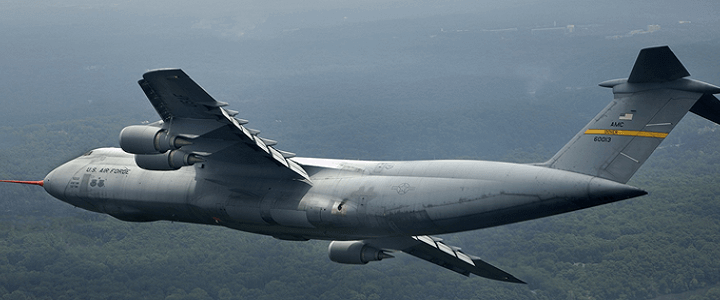For the past several years careers in aerospace had been on a decline, and salaries largely remained flat. Those trends are changing, and aerospace workers may see their career and salary prospects growing. Recent industry trends, including an increase in defense spending, is bringing the demand for those with security clearance and aerospace experience sky high again.
According to a report from Aerospace Industries Association, the United States led the global exports in the aerospace and defense (A&D) segment in 2017, and the country accounted for 34% of the total industry export.
In addition, Deloitte’s 2018 Global Aerospace and Defense Industry Outlook reported the industry is expected to strengthen in 2018 by about 4.1%, up from the 2.1% revenue growth that A&D saw last year. Global defense sector revenues are also expected to grow 3.6 percent, as global tensions persist and nations around the globe seek to recapitalize or otherwise improve their respective defense posture. Deloitte estimates global defense spending to grow at a CAGR (compound annual growth rate) of about 3% over the 2017-2022 period, surpassing U.S. $2 trillion by 2022.
The United States remains the largest defense spending nation, accounting for 36% of total global military spending. The commitment to defense spending is only growing under the current administration, with its focus on strengthening the nation’s military. In February the Pentagon unveiled the FY 2018 budget proposal – which includes $716 billion for national security. This includes $21.7 billion for aircraft.
What do all of these numbers really mean? It is a good time to be a cleared professional in the A&D sector.
“Right now it is the best to determine where you are in your career, and to determine if it is right to make a move,” suggested Garrick A. Cooper, TSC, CSP, vice president for managed staffing and recruitment at Butler Aerospace & Defense.
“There are a couple of factors in play right now,” Cooper told ClearanceJobs. “Aerospace is being sequeezed on pricing as the big players are buying up the smaller OEMs [Original Equipment Manufacturers], so the supply chain is moving from many companies to a few bigger companies that are competing with one another.”
The other factor is that there are fewer cleared people working in A&D than ever before, while there has been a rise in roles that require security clearance.
“That is making it far more challenging for employers, but it is great for those wanting to advance their career,” added Cooper.
When it comes to career advancement, it appears many individuals are ready and willing to make a move. 84% of cleared candidates indicated they were at least somewhat likely to make a career move, according to a recent ClearanceJobs survey. Candidates are aware it’s their market, and they’re increasingly willing to consider new opportunities.
“There are really a limited number of people out there, and that could drive costs,” said Cooper. “That is a concern but more for the employers. Right now is really the best time to make a move, as companies are continuing to ramp up and good talent is simply hard to find.”
Where to Look for Cleared aerospace Talent?
With increased competition and a booming defense sector, cleared candidates with experience have their pick of career choices. But that won’t go far enough to fill the number of job openings anticipated. Aerospace engineering is one of only a few jobs with less than 1% unemployment. For the past 10 years labor analysts have warned of the ‘graying’ of the aerospace workforce, as the number of baby boomers eligible for retirement continues to grow, and the number of science, technology, engineering and math (STEM) graduates able to replace them decreases. A Deloitte consultant noted the median age for aerospace program managers and engineers is generally in the 50s, while the median age for aerospace workers across all engineering fields is generally in the late 30s to early 40s.
Companies are beginning to see that if they want the numbers they need to grow, they’ll need to work harder to recruit talent straight out of school. United Technologies, for instance, has over 30 workforce training programs, from high school to community college programs. It also helps to cover the college costs of its employees – a critical benefit for aerospace grads tackling a mound of student loans.
Some companies are reaching out even younger. Lockheed Martin launched Space Day in 1997, a day to promote STEM careers to America’s youth. It continues to host open houses and provide outreach to elementary and high school students – all with the aim of promoting the benefits of pursuing a technology career to even the youngest applicants.
While the combination of the right skill set with the right eligibility continues to create an impossibly tight labor market, the good news is all of these outreach efforts by aerospace employers big and small may be paying off. A recent survey of more than 62,000 U.S. students across a variety of disciplines found engineering graduates selected government or defense industry employers as top employers equally as often as they selected tech giants such as Google and Tesla.
With today’s trifecta of strong budgets, clear growth, and employer competition, it is a good time to be a candidate pursuing an aerospace career.




